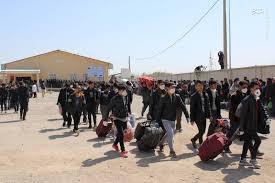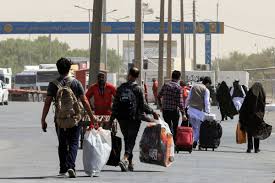Migration of Afghans; factors, opportunities and harms
The migration of Afghans is one of the most important social and economic phenomena that has had a profound impact on Afghanistan and the destination countries. This migration is caused by various factors and creates both opportunities and damages. In the following, the factors, opportunities and harms of Afghan migration are examined:
- Factors of Afghan migration
A) Economic factors
• Poverty and unemployment:
The high rate of unemployment and widespread poverty have forced many Afghans to seek a better life in other countries.
Lack of job opportunities:
The lack of various industries and jobs in Afghanistan encourages many to migrate.
Access to better income:
The income in countries receiving immigrants is much higher than in Afghanistan.
b) Security agents
War and insecurity:
Long wars, the presence of armed groups and political instability are the main factors of Afghan migration.
• Violence and threats:
Fear of attacks by the Taliban, ISIS, or other armed groups has forced many families to leave their homes.
c) Social factors
• Better training and services:
Limited access to quality education and health services in Afghanistan encourages people to migrate.
• Social inequality:
Ethnic, religious and gender discrimination in some areas is also the reason for the migration of some Afghans.
d) climate change and natural disasters
Drought:
Lack of water and widespread drought have caused the reduction of agricultural products and the migration of villagers.
• Earthquake and other natural disasters:
Natural disasters have also forced part of the population to leave the place of residence.
- Opportunities for Afghans to migrate
A) For immigrants
• Economic improvement:
Afghans in host countries often earn more and can support their families.
Access to better services:
Education, health and security in other countries are usually of better quality.
• Acquiring new skills and knowledge:
Migration allows immigrants to learn new languages and skills.
b) For host countries
• Cheap labor:
Afghans often work as labor in various economic sectors (such as agriculture, construction, and services).
• Cultural diversity:
The presence of Afghans can contribute to cultural diversity and the expansion of human relations.
- Damages of Afghan immigration
A) for Afghanistan
Brain drain:
The departure of educated and specialized people has reduced the skilled manpower in the country.
• Reducing the workforce:
The migration of young people to other countries reduces the active labor force of Afghanistan.
• Economic dependence:
Afghanistan’s economy is heavily dependent on remittances from migrants.
b) for immigrants
• Residence problems:
Many Afghans immigrate illegally and face the risk of deportation or arrest.
• Discrimination and xenophobia:
In the host countries, Afghan immigrants face discrimination, racism and abuse.
• Lack of access to social services:
Many Afghan immigrants, especially undocumented ones, do not have access to health and education services.
Cultural and linguistic gap:
The cultural and linguistic difference between the immigrants and the native people of the host country makes it difficult for them to adapt.
c) for host countries
• Pressure on resources:
An increase in the number of immigrants can increase the pressure on public resources and services (such as education and health).
• Social tensions:
The presence of immigrants may lead to cultural and social tensions in some areas.
- Solutions to reduce damages and take advantage of opportunities
For Afghanistan:
- Improving security and stability:
Ending war and establishing stable security to prevent migration. - Creating job opportunities:
Developing industries and supporting agriculture to reduce unemployment. - Investing in education and health:
Providing quality services to reduce the need for immigration.
For host countries:
- Better immigration management:
Creating transparent policies for the residence and work of immigrants. - Cultural integration programs:
Helping immigrants to learn the language and get to know the culture of the host country. - Protecting the rights of immigrants:
Preventing discrimination and protecting the human rights of immigrants.
Afghan migration is a complex issue that requires international cooperation and comprehensive planning to reduce harm and exploit opportunities.

